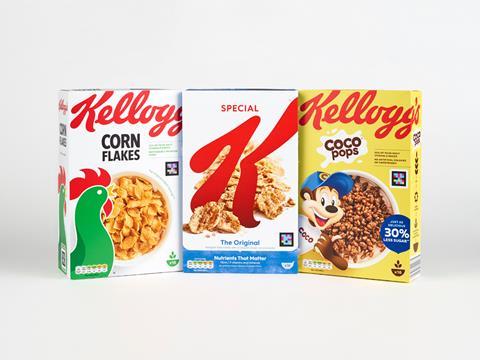
Following a successful trial, Kellogg's is permanently implementing a new "world-first" technology that enables consumers with sight loss to playback on-pack information via a smartphone.
Important information on food packaging, such as allergen details can often be in print that’s difficult for blind or partially sighted people to read. The new boxes will allow a smartphone to detect a unique on-pack code and playback labelling information to the shopper with sight loss.
The company will change all its cereal packaging, beginning in 2022 with the first accessible boxes of Special K appearing on-shelf in January.
This announcement comes after a successful UK trial last year in partnership with Co-op, on Kellogg’s Coco Pops boxes. Evaluation of the pilot by UK charity Royal National Institute of Blind People (RNIB) showed that 97% of the participants agreed that they would like to see more of these accessibility features available on grocery packaging in the future.
Unlike other types of printed codes, the new technology, called NaviLens, includes high contrasting coloured squares on a black background. Users do not need to know exactly where the code is located to scan it. It allows smartphones to pick up the on-pack code from up to three metres distance when a blind or partially sighted shopper points their device in the direction of the cereal box.
This then alerts the phone, and the shopper can choose to have the ingredients, allergen and recycling information read aloud to them – as well as reading it on their device using accessibility tools.
The technology is currently used across Barcelona, Madrid and Murcia city’s transport systems, making the cities easier to navigate for thousands of visually impaired citizens.
Marc Powell, strategic accessibility lead at RNIB, said: “This announcement from Kellogg’s is a real game-changer within the packaging world. It marks a significant step-change in how big brands can put accessibility at the forefront of design and packaging decisions and be a catalyst for change.
“Important information on packaging can often be in very small print, making it difficult or impossible for people with sight loss to read. Changes like this can provide blind and partially sighted people with vital information for the very first time, giving us the same freedom, independence and choice as sighted customers.
“Designing packaging so that it works for everyone makes complete sense and we hope that other brands will follow Kellogg’s lead in making packaging information more accessible.”
For more news and in-depth commentary on how packaging can connect brands and consumers, visit our sister publication Touchpoints.











